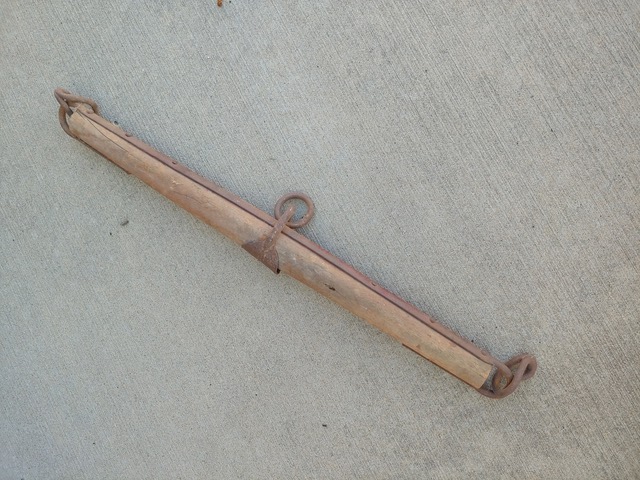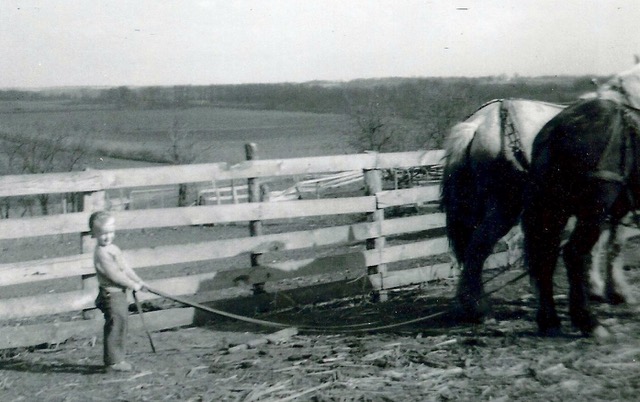November 2021
Vintage Discoveries
‘Single Tree’ was part of old-time farming
by Ken Weyand
Early in the 1940s, after years of “horse-farming,” my dad bought a tractor and sold his team of draft horses. Soon after that, much of the horse-drawn equipment was sold, re-purposed, or buried in pasture ditches to slow erosion. Iron parts that couldn’t be re-used were given to a scrap-iron drive to help the war effort.
A few items survived, including a much-used “single tree” that had been part of a farm wagon for decades. Stored in the garage of our urban home, it serves to remind me how my life began on a northeast Missouri farm in the days of dirt roads and one-room country schools.
The single tree was used for years, and could date to the early 1930s or earlier. My dad seldom bought new equipment if the old stuff could be patched or repaired, so it may be nearly a century old.
It measures 37 inches long, with iron hooks at both ends that attached to hames — straps that extended to a horse’s collar. It linked to a “double tree,” a larger cross-piece on the “tongue,” the long handle in front of the wagon or implement. The arrangement, and the farm wagon it served, was little changed from wagon teams of pioneer days.

The single-tree. Iron fittings on both ends were attached to “hames” on each side of horse. Center fitting attached to “double-tree” on wagon tongue. (Author’s photo)

The author holds reins of team, ready to be hitched to wagon, in early 1940s. Item near fence may be single-tree described in article. (Photo from author’s collection)
Horsepower
Two large draft horses — a mare and a gelding — provided the farm’s “horsepower” in those days. When not working, the team shared a stall in the old “horse barn,” built with pegs and wrought iron nails before the Civil War. The mare learned to open the latch of the barn door with her teeth, and the pair often would explore the large barn-lot, to my dad’s irritation.
Dad taught me the basics about driving the team, briefly letting me “take the reins” as I sat beside him on the spring seat. I remember even learning to back them up, although I didn’t get many chances to practice.
When I was about 8, the wagon had been modified to be pulled by a tractor, and was used as a hauler as my dad and a helper shucked corn by hand. I was allowed to drive in the field, pulling forward a few feet and stopping to allow the ears to be thrown in the wagon. The tractor was an International Harvester “Farmall H,” and I had to stand up to reach the controls. Dad would use the signals he had given the horses, clicking his tongue to “go” and yelling “woah” to stop. It was a bit demeaning, but it allowed me to gain experience as a tractor driver.
Ken Weyand can be contacted at kweyand1@kc.rr.com Ken is self-publishing a series of non-fiction E-books. Go to www.smashwords.com and enter Ken Weyand in the search box.

